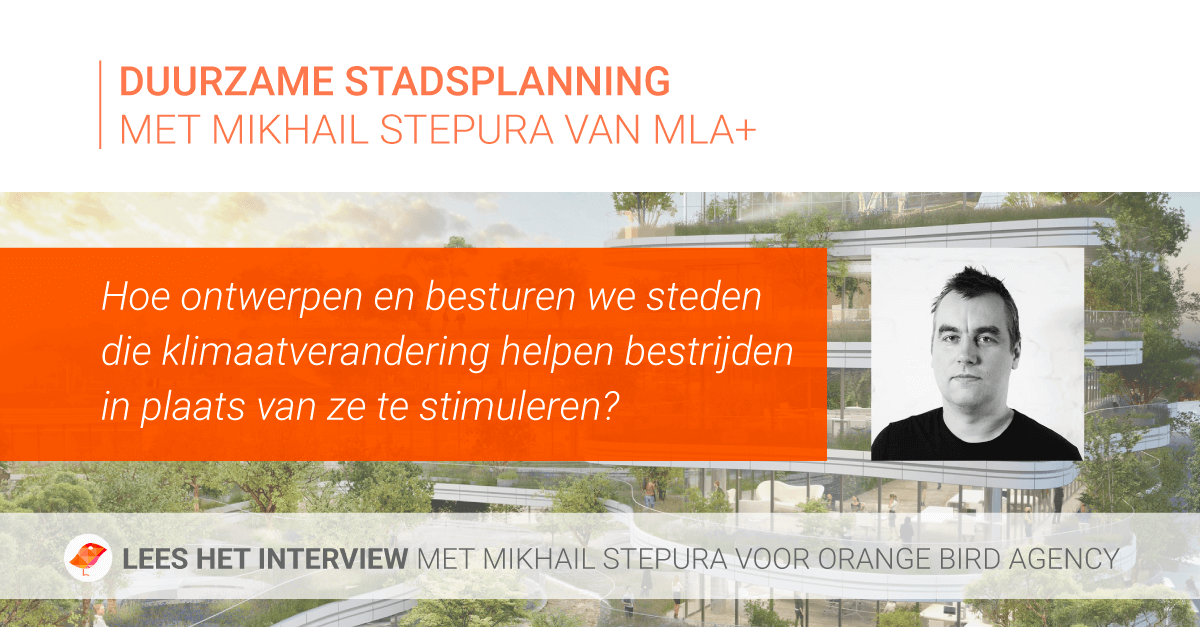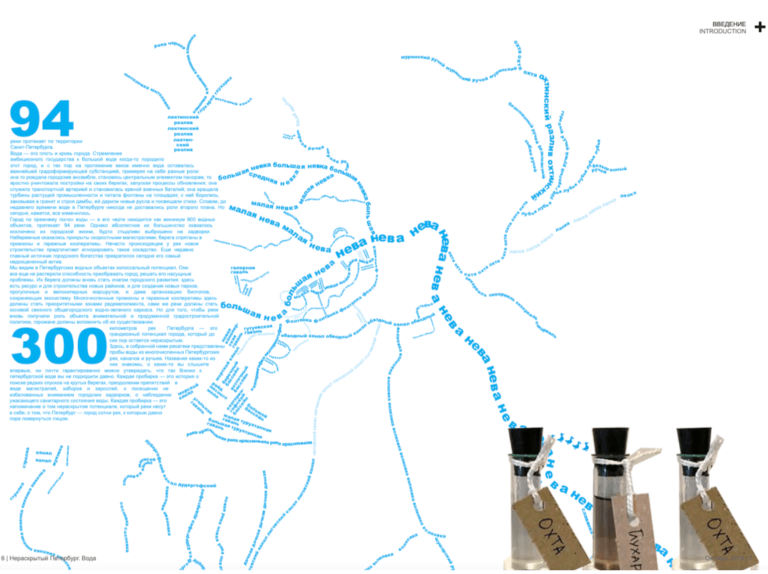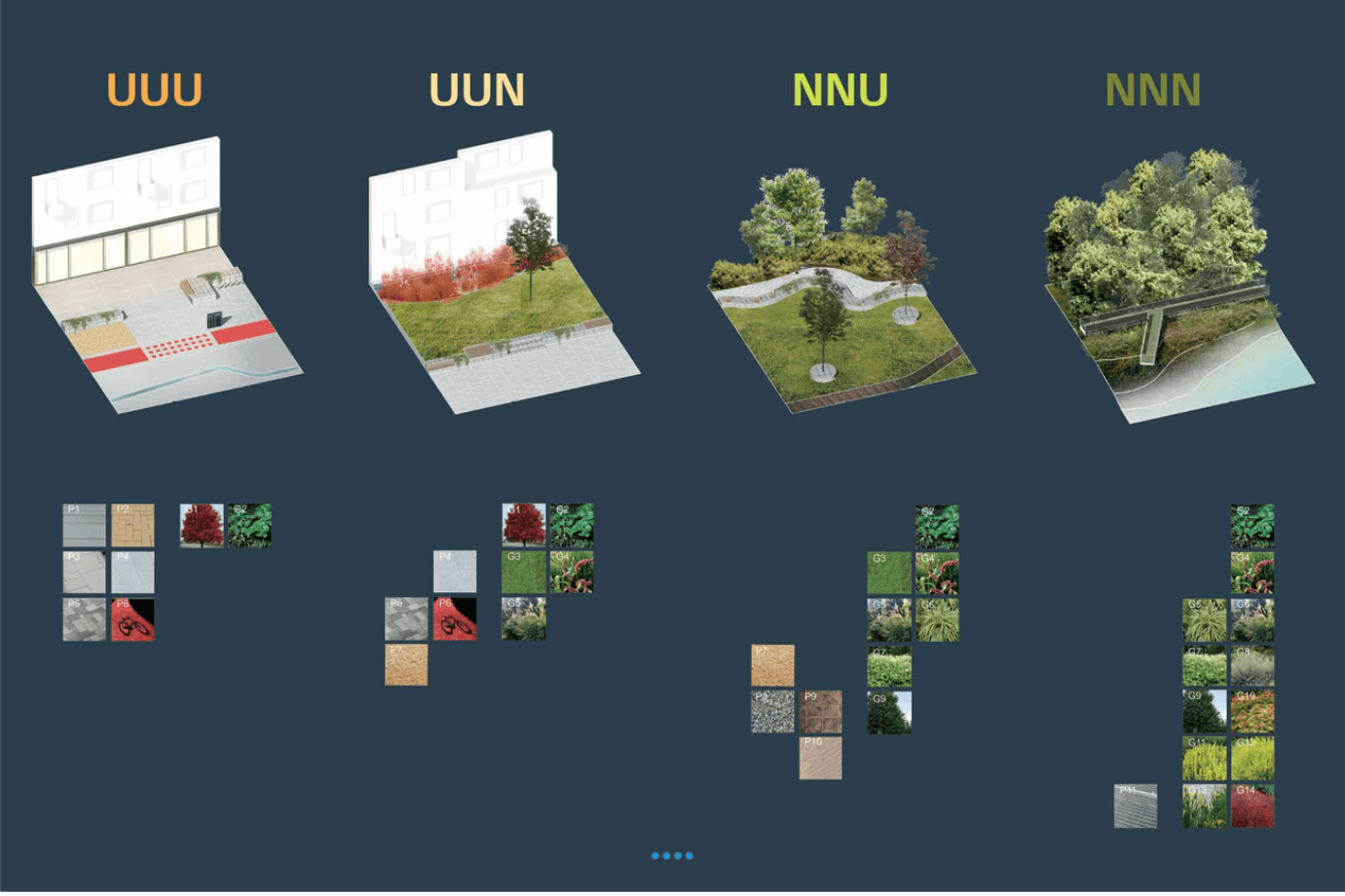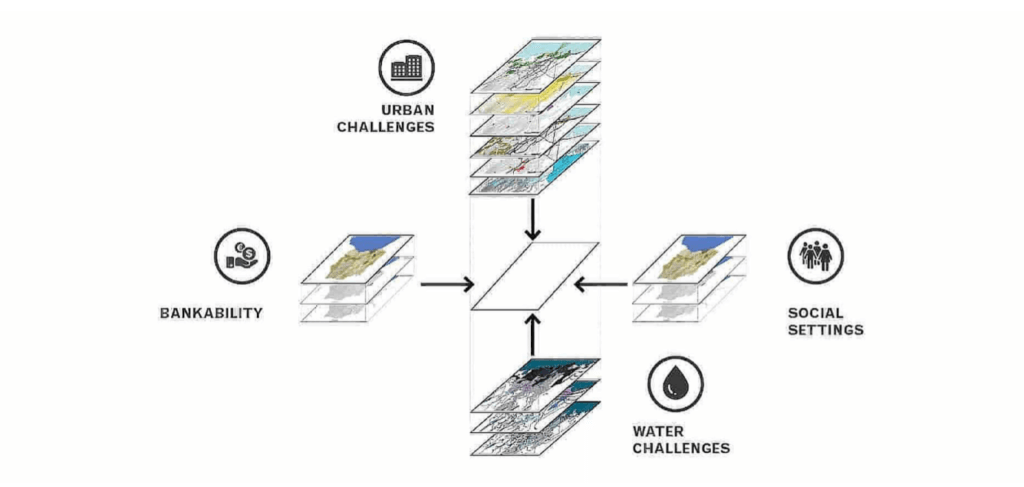on Tuesday April 20, 2021
Een Interview met MLA+ over Duurzame Stadsplanning
Wist je dat 72% van de wereldwijde uitstoot van broeikasgassen veroorzaakt wordt door steden? Dit roept de vraag op of steden zo kunnen worden ontworpen dat ze klimaatverandering tegengaan, in plaats van deze te stimuleren. In dit interview lees je hoe stedenbouwkundigen hun duurzame oplossingen onder de aandacht brengen van gemeenten en ontwikkelaars.

Om de wereldwijde temperatuurstijging te beperken tot maximaal 1,5°C per 100 jaar moet de mensheid de uitstoot van broeikasgassen tegen 2030 halveren. Dit punt wordt gezien als ‘point of no return’ voor onze planeet. Onze acties moeten dus snel en doeltreffend zijn. Het merendeel van de acties moet betrekking hebben op steden, omdat zij verantwoordelijk zijn voor ongeveer 72% van de wereldwijde uitstoot van broeikasgassen. De steden, centra voor onderwijs, wetenschap en innovatie, blijven een cruciale bron van overconsumptie en vervuiling. Kunnen we de stedelijke omgeving zo ontwerpen en beheren dat we klimaatverandering tegengaan in plaats van haar te stimuleren?
Een van de vogeltjes van Orange Bird Agency had het voorrecht om een kopje koffie te drinken met ruimtelijk expert Mikhail Stepura, en hem deze en andere vragen te stellen. Mikhail werkt bij internationaal stedenbouwkundig bureau MLA+ en deelt in dit interview zijn visie op duurzame steden.
Kun je kort iets vertellen over jouw expertise en rol bij MLA+?
Mijn naam is Mikhail Stepura, ik vervul meerdere rollen binnen ons bedrijf. Ik heb een graad in architectuur en ontwikkel stedenbouwkundige projecten en territoriale ontwikkelingsprojecten.
Hoe zijn MLA+ en jij bezig met klimaatverandering? Speelt het een rol bij stedenbouwkundige projecten? Hoe zou je een duurzame stad in enkele zinnen omschrijven?
Toen ik in de literatuur voor het eerst de term “duurzame ontwikkeling” zag, bedoelden we daarmee een ontwikkeling die in elke fase zo weinig mogelijk menselijke, economische en tijdsmiddelen vraagt. Voor de bouwomgeving betekent dit de ontwerpfase, de bouwfase, en de exploitatiefase van een project. Belangrijk is dat duurzaamheid een rationeel gebruik van het stedelijk grondgebied omvat, wat een van onze doelstellingen is. Veel van onze klanten, meestal stedelijke gemeenten, wenden zich tegenwoordig tot MLA+ met de vraag om strategische plannen voor grote gebieden te ontwikkelen. Onze opdracht bij dit soort projecten is het herstellen van de bestaande omgeving en het voorkomen van wildgroei op lege, perifere gebieden. Verdichting is daarom een van onze centrale ideeën, gekoppeld aan duurzaamheid.
Jouw werk is vooral gericht op de ontwikkeling van blauw/groene infrastructuur in steden – parken, waterfronten, kustgebieden, enz. Vanwaar deze interesse? Wat is hun rol in stedelijke ecosystemen?
Dat klopt. Weet je, ons personeel is erg jong. Mijn jonge collega’s vertellen hoe interessant het is om te werken bij MLA+, dat de projecten uitdagend zijn en dat de sfeer op kantoor prettig is, dus solliciteren veel mensen naar een stageplaats.
Een paar jaar geleden deden we samen met de stagiairs onderzoek naar Sint-Petersburg, waar een van de kantoren van MLA+ is gehuisvest. We onderzochten de capaciteit van de stad, het aantal gebouwen dat de binnenstad kan herbergen zonder dat er sprake is van wildgroei, waarbij de onderbenutte perifere gebieden worden bebouwd. De cijfers bleken verbazingwekkend! We ontdekten dat het mogelijk is om de stad de komende 14-15 jaar te blijven verdichten en tegelijkertijd evenveel gebouwen neer te zetten als er nu worden neergezet. We hebben dit project in 2019 tentoongesteld op het Zodchestvo festival in Sint-Petersburg, en daarna op de Seoul Biennale of Architecture and Urbanism. Dit inspireerde ons team om het laboratorium format voort te zetten waarbij ook onze stagiairs worden betrokken.
 Image 1. Excerpt from the water study of Saint Petersburg by MLA+ . The map depicts rivers flowing throughout the city, with water samples taken from these rivers at the bottom right. Source: MLAplus.com
Image 1. Excerpt from the water study of Saint Petersburg by MLA+ . The map depicts rivers flowing throughout the city, with water samples taken from these rivers at the bottom right. Source: MLAplus.com
We begonnen na te denken over een nieuw onderwerp. We beseften dat we wilden werken met een eigentijdse agenda, of deze zelf te willen opstellen. Zo ontstond het waterlaboratorium. In Sint-Petersburg is zo veel water, maar de mensen maken er geen gebruik van. Langs de rivieren in het centrum van de stad staan granieten waterfronten van vóór de twintigste eeuw. Een andere categorie vormen de rivieroevers in de industriegebieden, die in de regel helemaal niet toegankelijk zijn voor het publiek. Tenslotte vonden we in de buitenwijken van de stad een aantal mooie, door groen omgeven rivieren. Nadat we het probleem hadden vastgesteld, besloten we de blauw/groene infrastructuur van de stad te evalueren en manieren voor te stellen om deze te verbeteren. We deden dit om een alomvattende strategie voor de ontwikkeling van rivieroevers te ontwikkelen, zodat de gemeente voortaan een instrument heeft, een reeks eisen voor toekomstige particuliere ontwikkelaars.
Volgens de laatste gegevens is de bouwsector verantwoordelijk voor bijna 40% van de energiegerelateerde kooldioxide-uitstoot. Wat is de verantwoordelijkheid van ruimtelijk deskundigen bij het terugdringen van deze cijfers? Wat kunnen stedenbouwkundigen en architecten doen om de uitstoot drastisch terug te dringen?
Mijn antwoord zal misschien niet als verrassing komen, maar een van de grootste bronnen van vervuiling is het verkeer. Als wij het gebruik van particuliere auto’s in de steden terugdringen maken we een grote stap. Om dit te bereiken, moeten we werken aan openbaar vervoer en het concept van de compacte stad. In een compacte stad gaan mensen liever te voet, op de fiets, of op de scooter, wat steeds populairder wordt. Dat is één van de richtingen van ons werk. We proberen gemeenten ervan te overtuigen het reizen met het openbaar vervoer te stimuleren en het particuliere autogebruik juist uitdagender te maken. In grote steden zien we dat mensen hun focus verleggen naar openbaar vervoer, carsharing en e-vehicles. Nog een instrument, dat voor mij als stedenbouwkundige van nog groter belang is, is een weldoordachte plaatsing van woonwijken en werkplekken. Het ontwerpen van gemengde wijken waar burgers zowel kunnen wonen als werken zou ook de behoefte aan auto’s verminderen. Als we deze stappen nu zetten, verminderen we onze uitstoot drastisch.
Voor welke klanten werk je meestal? Hoe maak je het belang van duurzame oplossingen duidelijk? Benader je klanten uit de publieke en private sector verschillend?
Onze klantenkring bestaat uit twee hoofdgroepen. De eerste groep zijn particuliere klanten, meestal projectontwikkelaars die een woonwijk willen bouwen. We werken met verschillende schalen, van één gebouw of een huizenblok tot grote gebieden van ongeveer 60-70 ha. De tweede groep zijn gemeenten en stadsbesturen. Ook hier werken wij met verschillende formats – concepten van territoriale ontwikkeling en masterplannen.
Ik kan het mis hebben, maar voor de eerste groep, de ontwikkelaars, lijkt duurzaamheid geen heel aantrekkelijk concept. Zij zijn zich misschien wel bewust van het belang ervan, maar hun doel is winst. Zij zijn vooral geïnteresseerd in het bouwen van een goedlopend project met een aantrekkelijk ontwerp en ruime appartementen. Snel beginnen, snel bouwen, snel verkopen – en op naar het volgende project. Een dergelijke aanpak is begrijpelijk. Een deel van deze particuliere klanten begrijpt wel dat de concurrentie op de markt heviger wordt, en dat zij nieuwe woningtypes moeten aanbieden. Dit is wanneer een ecologische agenda belangrijk wordt. Naast appartementen beginnen ontwikkelaars met het aanbieden van milieuvriendelijke comfortabele stedelijke omgevingen met groene gebieden in de buurt, en het onderhoud van deze faciliteiten.
 Image 2: Public spaces design concept of a residential area in Moscow by MLA+. Each of the four zones is given the appropriate design code for the surface materials, plants and equipment used in these areas throughout the project. Source: MLAplus.com
Image 2: Public spaces design concept of a residential area in Moscow by MLA+. Each of the four zones is given the appropriate design code for the surface materials, plants and equipment used in these areas throughout the project. Source: MLAplus.com
Een voorbeeld ter illustratie: MLA+ werkte aan een strategie voor een vrij grote woonwijk in Moskou. Voor dit project ontwierpen we een specifieke aanpak. We verdeelden het gebied in een tiental zones met codenamen. De meest verstedelijkte zone werd 3U genoemd, oftewel urban-urban-urban. De zone waar het grootste deel van het bestaande landschap bewaard was gebleven noemden we 3N, oftewel natuur-natuur-natuur. Daartussen plaatsten we de zones met een verschillend evenwicht tussen natuurlijke en ontworpen omgevingen. Voor onze klant was het een duidelijk idee. De ontwikkelaar had een budget en in plaats van dat over het hele grondgebied uit te smeren, investeerde hij gedifferentieerd in bepaalde zones. De zone waar de natuur onaangetast bleef kostte niets, terwijl de zone die het dichtst bij de bushaltes of andere stedelijke infrastructuur lag het duurst was. Bovendien bleken de onderhoudskosten verschillend te zijn. 3N-zones maakten ongeveer 50% van het grondgebied uit en vergden niet veel werk, terwijl sterk verstedelijkte zones (20-30%) zorgvuldig onderhoud vroegen. Zo’n systeem is goedkoper dan overal in gelijke mate het gras maaien of gevallen blaadjes verwijderen.
Terugkomend op het werk met gemeenten: wat bepaalt in hoeverre een gemeente openstaat voor duurzame oplossingen en bereid is om een duurzame stad te creëren? Wat is je advies voor cleantech bedrijven die technologieën en producten aanbieden om onze steden duurzaam te maken, maar die gemeenten nog niet van de urgentie kunnen overtuigen?
Ik denk dat mensen die bij gemeenten werken nogal verschillend zijn. Ambtenaren met een vooruitziende blik willen hun steden veranderen en zoeken vaak naar nieuwe informatie en nieuwe benaderingen. Zij bezoeken stads-fora of laten zich voorlichten op andere platforms. Zij willen hun steden comfortabeler en leefbaarder maken. Deze mensen benaderen ons, zodat wij onze kennis op dit gebied kunnen delen. Vaak vinden zij ons via eerdere projecten of aanbevelingen.
Bij het werken met gemeenten in Rusland moeten we soms de basisideeën nog verduidelijken. Ons team legt uit waarom het bebouwen van lege percelen buiten de stad onverstandig is. We refereren aan de begroting door uit te leggen dat vervoer en technische infrastructuur in perifere gebieden duur is, en dat de gemeente dit geld in plaats daarvan kan besteden aan binnenstedelijke ontwikkeling. Dit is het soort argumenten waar ambtenaren wat mee kunnen, zodat zij instemmen met de voorgestelde ideeën voor verdere actie.
Ons kantoor in Rotterdam heeft heel andere ervaringen. Een van hun projecten is gestart met een open oproep van de Nederlandse regering. De regering initieerde het Water as Leverage programma, met als doel het verkennen van verschillende benaderingen van waterbeheer in Azië. Drie voorgeselecteerde steden, Chenay in India, Khulna in Bangladesh en Semarang in Indonesië, hebben vergelijkbare urgente problemen – verstedelijking, overstromingen en ernstige weersveranderingen. Vóór de start van het project in deze steden heeft de werkgroep gesprekken gevoerd met de plaatselijke besturen om na te gaan of zij een dergelijk programma zouden steunen. De planners hoefden dan ook niemand te overtuigen van de noodzaak van het project, het ging hier om beleidswerk op hoog niveau van de Nederlandse regering.
 Image 3. The four key challenges for a successful Water as Leverage project by MLA+. Source: MLAplus.com
Image 3. The four key challenges for a successful Water as Leverage project by MLA+. Source: MLAplus.com
Zoals mijn collega Markus Appenzeller beschreef, betrokken ze vanaf het begin alle lokale belanghebbenden. Ze benaderden natuurlijk politici, maar ook de plaatselijke universiteit speelde een belangrijke rol bij het bepleiten van hun ontwerpoplossingen. Voor de presentatie van de ideeën aan het publiek zetten de planners lokale spelers in de schijnwerpers. Ook hielden zij een reeks workshops met vertegenwoordigers van lokale groepen en infrastructurele organisaties, zoals bijvoorbeeld het waterleidingbedrijf of de rioolwaterzuiveringsdienst. Samenwerken met de gemeenschap helpt om te laten zien dat het voorstel veel meer hun ding is, dan iets dat van bovenaf komt. Als zo’n project niet geworteld is en niet op plaatselijke steun kan rekenen, kan er niets worden bereikt. Dat geldt waarschijnlijk overal ter wereld*.
Het blijkt dus doeltreffend te zijn om te wijzen op financiële aspecten en om lokale belanghebbenden te betrekken. Samenvattend, wat zou jij de sleutel noemen tot effectieve samenwerking met gemeenten: volhardend zijn, de dialoog voortzetten, het proces wat tijd geven?
Een beetje van alles. Ik kan niet zeggen dat onze ervaring met de gemeenten uitsluitend uit overwinningen bestaat. Wij kwamen, en zij bewogen zich onmiddellijk in de juiste richting – nee, zo werkt het niet. Ik wil in dit verband de rol van het onderwijs benadrukken. We moeten nu de zaadjes van nieuwe progressieve ideeën planten, zodat ze in de toekomst kunnen groeien.
*Speciale dank aan Yana Golubeva en Markus Appenzeller voor hun commentaar.
Previous postNext post


